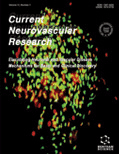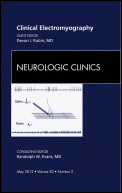
European Stroke Journal
Scope & Guideline
Connecting researchers and clinicians for impactful stroke solutions.
Introduction
Aims and Scopes
- Comprehensive Stroke Research:
The journal publishes studies across the spectrum of stroke research, including epidemiological studies, clinical trials, and basic science, focusing on understanding stroke mechanisms, risk factors, and outcomes. - Innovative Treatment Approaches:
A significant emphasis is placed on new therapeutic strategies, including endovascular procedures, thrombolysis, and the use of advanced imaging techniques to optimize treatment outcomes for stroke patients. - Multidisciplinary Perspectives:
The journal encourages contributions that integrate various medical disciplines, such as neurology, cardiology, rehabilitation, and public health, reflecting the multifaceted nature of stroke care. - Guidelines and Consensus Statements:
A core element of the journal's scope is the dissemination of clinical guidelines and consensus statements from leading stroke organizations, informing best practices in stroke management. - Patient-Centered Research:
Research focusing on patient experiences, outcomes, and quality of life post-stroke is prioritized, emphasizing the importance of patient perspectives in stroke care.
Trending and Emerging
- Artificial Intelligence and Machine Learning:
A growing number of studies are exploring the applications of AI and machine learning in stroke diagnosis and prediction of outcomes, highlighting the potential for these technologies to revolutionize stroke care. - Telemedicine and Remote Monitoring:
Research on telemedicine in stroke care has gained momentum, particularly in the context of the COVID-19 pandemic, emphasizing its role in improving access to care and patient management. - Personalized Medicine Approaches:
Emerging themes include the exploration of personalized medicine in stroke treatment, focusing on tailoring interventions based on individual patient characteristics and genetic profiles. - Quality Improvement Initiatives:
There is an increasing emphasis on quality improvement projects aimed at enhancing stroke care delivery, patient outcomes, and adherence to clinical guidelines. - Secondary Prevention Strategies:
Research is increasingly focusing on innovative secondary prevention strategies, including lifestyle interventions and novel pharmacological approaches to reduce the risk of recurrent strokes.
Declining or Waning
- Basic Science Studies:
There has been a noticeable decrease in the number of basic science studies exploring the underlying biological mechanisms of stroke, possibly due to a growing interest in translational and clinical research. - Longitudinal Cohort Studies:
The frequency of longitudinal cohort studies examining long-term outcomes of stroke patients has diminished, indicating a potential shift towards more immediate clinical trials and interventional studies. - Traditional Risk Factor Studies:
Research focusing on traditional stroke risk factors (e.g., hypertension, diabetes) has become less prominent, as newer studies tend to explore more complex interactions, such as genetic and environmental influences. - Studies on Stroke in Non-Adult Populations:
Research specifically targeting pediatric and young adult stroke populations has seen a decline, potentially overshadowed by the more pressing focus on older adults, who constitute the majority of stroke cases.
Similar Journals

CURRENT NEUROVASCULAR RESEARCH
Illuminating Pathways in Developmental NeuroscienceCURRENT NEUROVASCULAR RESEARCH is an esteemed peer-reviewed journal published by Bentham Science Publishers Ltd, focusing on the intricate relationships within the realms of cellular and molecular neuroscience, developmental neuroscience, and neurology. With an ISSN of 1567-2026 and an E-ISSN of 1875-5739, this journal has been contributing to the field since its inception in 2004 and is poised to continue through 2024. As a resource dedicated to disseminating innovative research findings, CURRENT NEUROVASCULAR RESEARCH is recognized within Category Quartiles as Q3 in multiple fields, including Neurology (clinical) and Developmental Neuroscience. Although classified in the Q4 category for Cellular and Molecular Neuroscience, the journal maintains a crucial role in fostering academic discourse and advancing our understanding of neurovascular dynamics. Researchers, professionals, and students will find valuable insights in this journal, offering access to a diverse range of studies that highlight cutting-edge developments in the field.

NEUROIMAGING CLINICS OF NORTH AMERICA
Exploring the Frontiers of Neuroimaging PracticeNEUROIMAGING CLINICS OF NORTH AMERICA is a premier peer-reviewed journal published by W B SAUNDERS CO-ELSEVIER INC, focusing on the evolving field of neuroimaging and its applications in clinical practice. Established in 1993, this journal has become a pivotal resource for researchers, professionals, and students alike, providing in-depth articles, reviews, and case studies that address both cutting-edge advancements and standard practices in neuroimaging. With its impressive credentials, ranking in the top quartiles of various medical categories—including Q2 in Medicine (Miscellaneous) and Q2 in Radiology, Nuclear Medicine, and Imaging—the journal is vital for advancing knowledge and clinical applications in the disciplines of neurology and radiology. Although it does not offer open access, the journal maintains a robust reputation with a broad readership, embodying a commitment to excellence in medical literature. The ISSN number is 1052-5149 and the E-ISSN number is 1557-9867, ensuring the accessibility and dissemination of high-quality neuroimaging research.

Journal of NeuroInterventional Surgery
Pioneering New Pathways in NeuroInterventional Surgery.The Journal of NeuroInterventional Surgery, published by the BMJ Publishing Group, stands at the forefront of advancing knowledge in the fields of neurointerventional procedures, neurology, and surgical techniques. With an impressive impact factor reflective of its high-quality contributions, this journal occupies a prestigious position within the Q1 category across multiple domains: Medicine (miscellaneous), Neurology (clinical), and Surgery, ranking 11th in Medicine Surgery and 47th in Neurology Clinical out of their respective categories per Scopus metrics. Since its inception in 2009, it has provided an essential platform for researchers, clinicians, and students to disseminate innovative findings and engage with groundbreaking developments in neurointerventional practices. As a prominent publication in the United Kingdom, located at British Med Assoc House, it is committed to open communication within the community, fostering collaboration, and setting the stage for future innovations in patient care and outcomes.

Topics in Stroke Rehabilitation
Fostering collaboration in stroke recovery strategies.Topics in Stroke Rehabilitation, published by Taylor & Francis Ltd, stands as a premier academic journal offering cutting-edge research and insights in the fields of rehabilitation, neurology, and community care. With an impressive impact factor reflecting its strong scholarly influence, this journal not only maintains a distinguished Q1 ranking in Community and Home Care and Rehabilitation but is also recognized in the Q2 category for Clinical Neurology, showcasing its relevance across multiple disciplines. Covering a comprehensive range of topics from neurorehabilitation techniques to patient-centered care strategies, Topics in Stroke Rehabilitation serves as an essential resource for researchers, healthcare professionals, and students dedicated to enhancing the quality of life for individuals recovering from stroke. With an accessible archive dating back to 1996 and continuous publication through 2024, this journal invites collaboration and discourse, fostering advancements in both theoretical knowledge and practical applications within the realm of stroke rehabilitation.

International Journal of Stroke
Elevating Clinical Neurology Through Rigorous ScholarshipThe International Journal of Stroke, published by SAGE PUBLICATIONS LTD, is a leading peer-reviewed journal dedicated to advancing the field of stroke research and clinical practice. Established with a commitment to disseminating high-quality scholarly articles, this journal has rapidly progressed to achieve a prestigious Q1 ranking in both Neurology and Clinical Neurology categories as of 2023. With a remarkably high Scopus rank of #7 among 192 in Neuroscience and #16 among 400 in Clinical Neurology, it places itself firmly in the top 4% of journals in its field, reflecting its significant impact on the academic and clinical landscape. Although it does not currently offer Open Access options, the journal provides a vital platform for researchers and clinicians alike, focusing on innovative treatments, methodologies, and evolving strategies for stroke prevention and recovery. With a publication scope that spans from 2006 to 2024, the International Journal of Stroke continues to foster knowledge exchange and encourage collaboration, making it an essential resource for anyone involved in neurologic healthcare.

PRACTICAL NEUROLOGY
Bridging Research and Practice in NeurologyPRACTICAL NEUROLOGY, published by the esteemed BMJ PUBLISHING GROUP, is a prominent journal in the fields of neurology and medicine, significantly impacting clinical practice since its inception in 2001. With an ISSN of 1474-7758 and an e-ISSN of 1474-7766, this UK-based journal reaches a diverse audience of researchers, clinicians, and students who seek to advance their understanding of neurological conditions and patient care strategies. Ranked in the second quartile (Q2) in both the miscellaneous medicine and clinical neurology categories for 2023, and positioned in the 47th percentile among its peers, PRACTICAL NEUROLOGY provides a platform for high-quality research that bridges the gap between laboratory findings and clinical applications. The journal's commitment to disseminating valuable information through peer-reviewed articles ensures that readers are equipped with the latest insights and practical knowledge necessary for improving outcomes in neurology. While access options are not currently open, the journal remains a vital resource for professionals striving to stay at the forefront of neurological research and clinical practice.

EUROPEAN JOURNAL OF NEUROLOGY
Exploring Breakthroughs in Clinical Neurology.EUROPEAN JOURNAL OF NEUROLOGY, published by WILEY, stands as a leading platform for the dissemination of innovative research and clinical developments in the field of neurology. With a robust impact factor and prestigious rankings, including being positioned as Q1 in both Neurology and Clinical Neurology categories, the journal plays a pivotal role in shaping neurological sciences from 1994 to 2024. Its Scopus rank highlights its importance, being in the 88th percentile for clinical neurology and 87th percentile for neuroscience. Located in the United Kingdom, the journal thrives as a vital resource for researchers, clinicians, and students dedicated to improving neurological health outcomes. Although it does not offer Open Access, its subscription-based model ensures high-quality peer-reviewed articles are accessible to a global audience, reflecting the continuous pursuit of excellence in neurological research and patient care.

NEUROLOGIC CLINICS
Transforming research into clinical practice.NEUROLOGIC CLINICS, published by W B SAUNDERS CO-ELSEVIER INC, stands as a leading journal in the field of clinical neurology, boasting an impressive impact factor that reflects its significant contributions to neurological research and clinical practice. With an ISSN of 0733-8619 and E-ISSN of 1557-9875, this journal provides a critical platform for the dissemination of innovative research, case studies, and reviews focusing on various aspects of neurology, from diagnosis to treatment interventions. As part of its commitment to advancing the understanding of neurological disorders, NEUROLOGIC CLINICS is categorized in the Q2 quartile for Neurology (clinical) in 2023, indicating its robust standing within the academic community. It is recognized for its rigorous peer-review process and is indexed in Scopus, ranking #147 out of 400 in its field with a notable 63rd percentile. The journal, which dates back to 1983 and continues to publish vital findings up to 2024, is an invaluable resource for researchers, healthcare professionals, and students dedicated to enhancing their knowledge and clinical skills in neurology. Subscribe now to stay abreast of current advancements and expand your expertise in this dynamic field.

STROKE
Pioneering Studies that Influence Public Health PoliciesSTROKE is a premier academic journal published by Lippincott Williams & Wilkins, dedicated to advancing the fields of neurology, cardiology, and specialized nursing. With an impressive impact factor and consistently ranked in the Q1 category across multiple disciplines—such as Advanced and Specialized Nursing, Cardiology, and Neurology—this journal serves as a crucial platform for researchers and healthcare professionals. It spans a rich historical context from 1970 to 2024, offering invaluable insights into stroke research and related cerebral vascular issues. The journal is committed to disseminating high-quality research that informs clinical practices and guides policy-making in public health. With a focus on empirical studies and clinical trials, STROKE stands as an essential resource for those invested in the complexities of neurological interventions and cardiovascular health. Ensure your access to this influential publication as it shapes the future of medical science and patient care.

Stroke-Vascular and Interventional Neurology
Transforming stroke care with cutting-edge insights.Stroke-Vascular and Interventional Neurology, published by WILEY, is a leading open-access journal dedicated to advancing the field of neurology with a particular focus on stroke and vascular interventions. Since its inception in 2021 as an open-access journal, it has fostered a collaborative environment for researchers, clinicians, and educators to share innovative findings and clinical practices that address the complexities of cerebrovascular diseases. The journal emphasizes high-quality, peer-reviewed research articles, reviews, and case studies, providing critical insights into cutting-edge therapies and surgical techniques. With an ISSN of 2694-5746, it aims to support the global medical community in improving the diagnosis, treatment, and overall management of stroke patients. Researchers and healthcare professionals benefit from its accessible content, which is vital for fostering comprehensive understanding and evidence-based practices within the realm of interventional neurology.